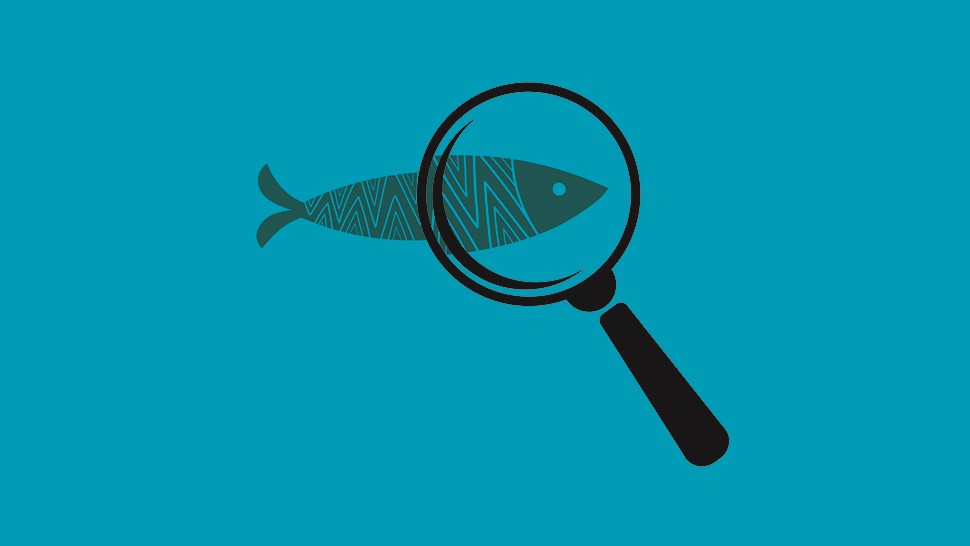
At our Bon Appétit colleges and universities, students are active participants in the movement towards sustainable seafood. It’s been over 20 years since our commitment to align with Monterey Bay Aquarium’s Seafood Watch Program to guide our seafood purchases, ensuring the fish we serve supports the health of our oceans, which are increasingly threatened by overfishing, pollution, and climate change.
Our chefs on college campuses around the country have the unique responsibility to expand the minds and palates of an emerging generation, and an opportunity to educate students about the importance (and deliciousness) of sustainably sourced seafood options, both wild-caught or farmed, that are served in their campus cafés.
We are highlighting three of our campus chefs who are particularly passionate about seafood, to share their stories that inspire innovation in their menus and a deep commitment to healthy marine ecosystems for generations to come.
ROGER WILLIAMS: Executive Chef Jonathan Cambra
Roger Williams University in Bristol, Rhode Island is awash with local seafood, located within 20 minutes of the largest fishing seaport on the East Coast. The proximity to an abundance of diverse local fish stocks and a close connection to the local seafood community and shellfish research brings fish front and center to the student experience at Roger Williams, especially in the dining hall.
In addition to serving as the Executive Chef at Roger Williams, Jon Cambra is also a local commercial fisherman on the side, which explains his deep passion for and knowledge of local seafood in the Narragansett Bay. The RWU Shellfish Program is responsible for fortifying the Bay with Quahogs or Hard Clams, which Chef Jon responsibly harvests and serves on campus in New England clam chowder or linguini with clams, creating a meaningful full-circle cycle that begins and ends with a commitment to seafood at the university.
As Roger Williams General Manager James Gubata explains, “we eat with the ecosystems.” The culinary team, led by Executive Chef Jon, approaches menu-making based on what’s local and in season, working with the Monterey Bay Aquarium’s recommendations and a preference for under-loved species when possible. As an example, they like to serve Acadian Redfish, a deepwater species that is locally abundant and affordable, exposing students to a less common species that’s sustainably caught. To transition seafood skeptics to seafood lovers, James emphasizes the importance of making delicious food with local products— students just need to give it a chance.
CARLETON COLLEGE: Executive Chef Mike Carlsen
In Northfield, Minnesota, the chefs at Carleton College approach seafood options in two ways: by offering familiar dishes like shrimp scampi or taking a familiar fish and preparing it in a less familiar way, like togarashi-crusted cod. Executive Chef Mike Carlsen wants to show students that there are many creative ways to prepare fish that are exciting, delicious, and nutritious, while selecting species that are preferred by the Seafood Watch Program. He notes, it’s up to chefs to check periodically to make sure they are selecting the most desirable species because the ratings do change over time.
While common fish like shrimp, salmon, and cod are always hits with students, Chef Mike enjoys that Carleton students are very adventurous eaters that are well-versed in global cuisines. Other options that students might find include okonomiyaki (a Japanese cabbage and seafood pancake), as well as clam chowder or house-smoked fish at the deli station. The culinary team at Carleton works to keep the menu interesting for students beyond the more classic baked fish filet.
Even though the campus is nestled in the heart of the Midwest, Chef Mike explains that there is a strong fishing culture in Minnesota. Whenever he can, he sources local wild-caught Walleye from the Red Lake Nation. This not only supports the livelihoods and traditional wisdom of the Red Lake Band of Chippewa people, but also shows that local, sustainable freshwater fish is indeed abundant in the Midwest.
SCRIPPS COLLEGE: Executive Chef Francisco Ramirez
The Executive Chef at Scripps College in Claremont, California is no stranger to seafood. Before working at Scripps, Executive Chef Francisco Ramirez worked at a fish market for 10 years, his grandfather is a fisherman, and he grew up by the coast. As he says, seafood is what he likes to do, which is reflected in his menus and experience with what works best in their campus café.
One of the things his team thinks about most is how to maintain quality for fish served in large-format buffet-style dining. Chef Francisco says their team tries to consider what species and preparations will stay moist in a hot box like a white flaky fish or salmon. They try to keep it fun and interesting with a variety of options, including crab cakes, shrimp boils, or weekly surf and turf nights.
Quality and freshness are also important, which comes from their local seafood purveyor, Santa Monica Seafood. Chef Francisco has a close relationship with their rep to see what’s freshest and in season. Students can also recognize the enhanced quality when it’s prepared in an enticing way, like cooking filets on the flat top to order. The thoughtful approach and emphasis on flavor make the experience special for Scripps students and keeps them coming back for more.